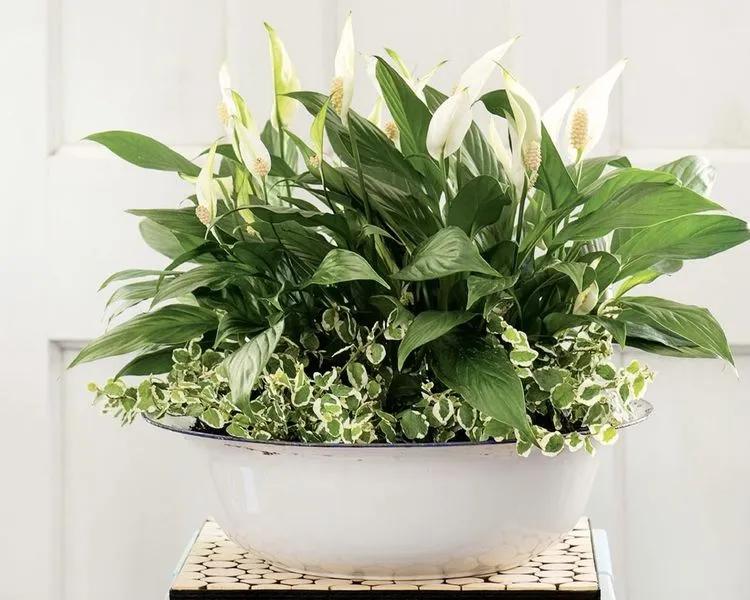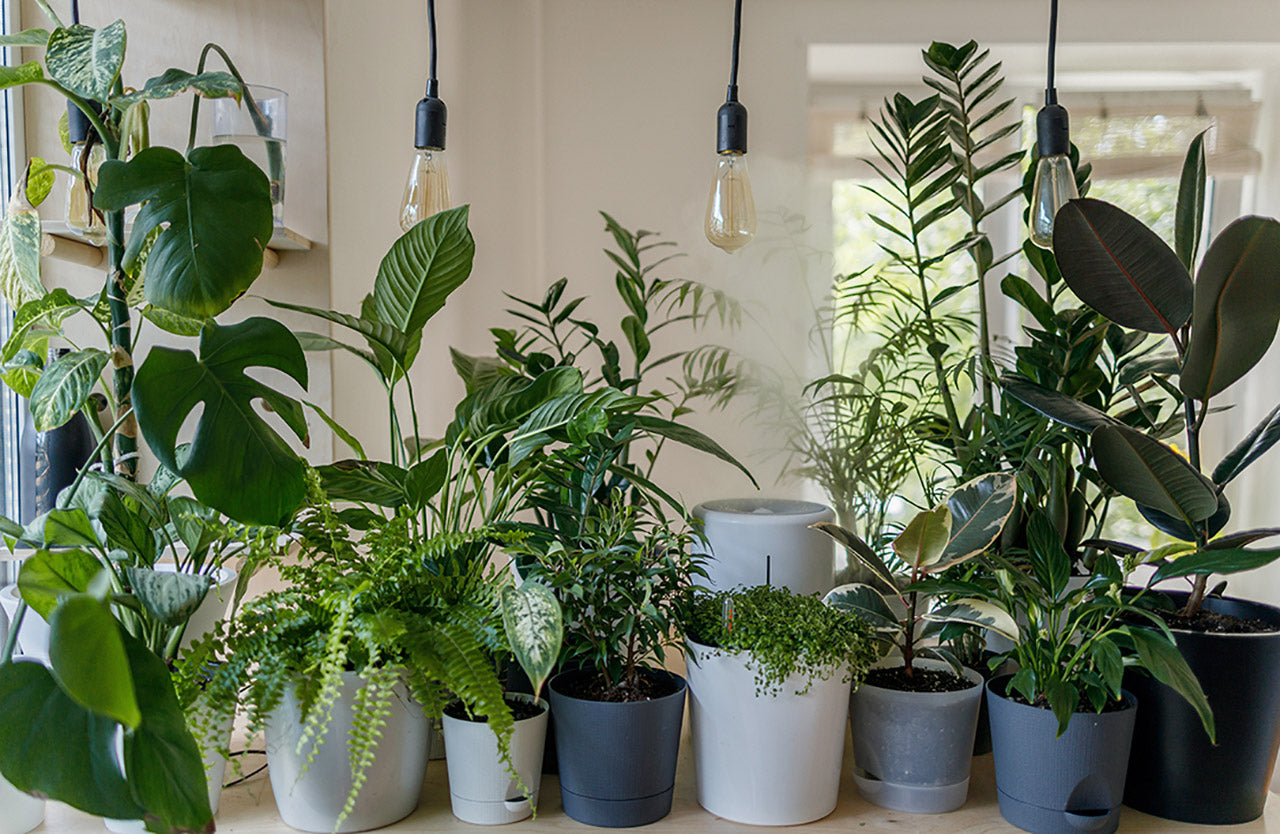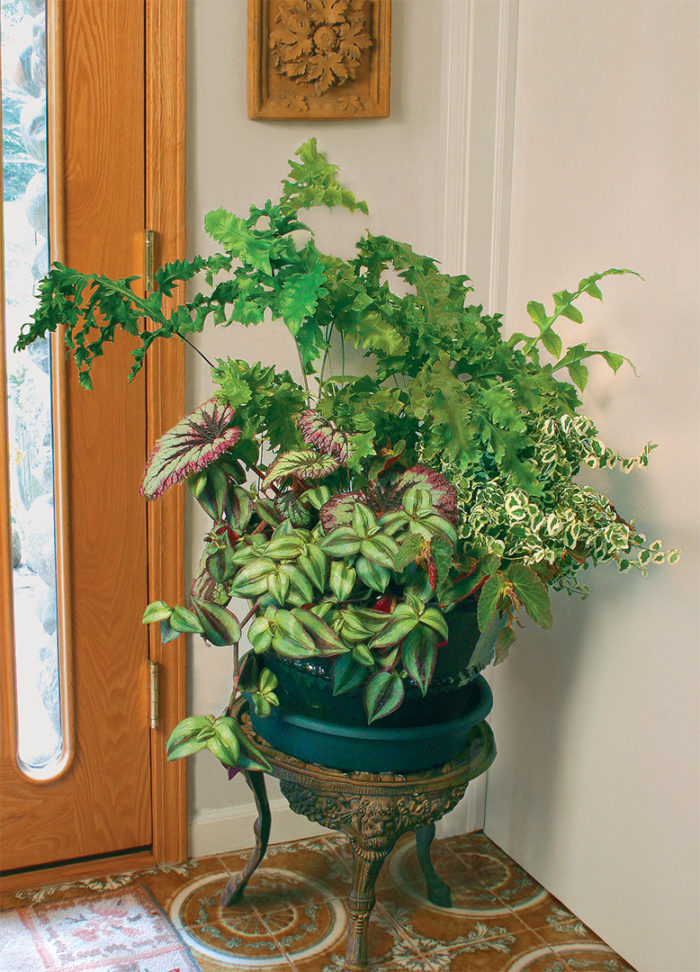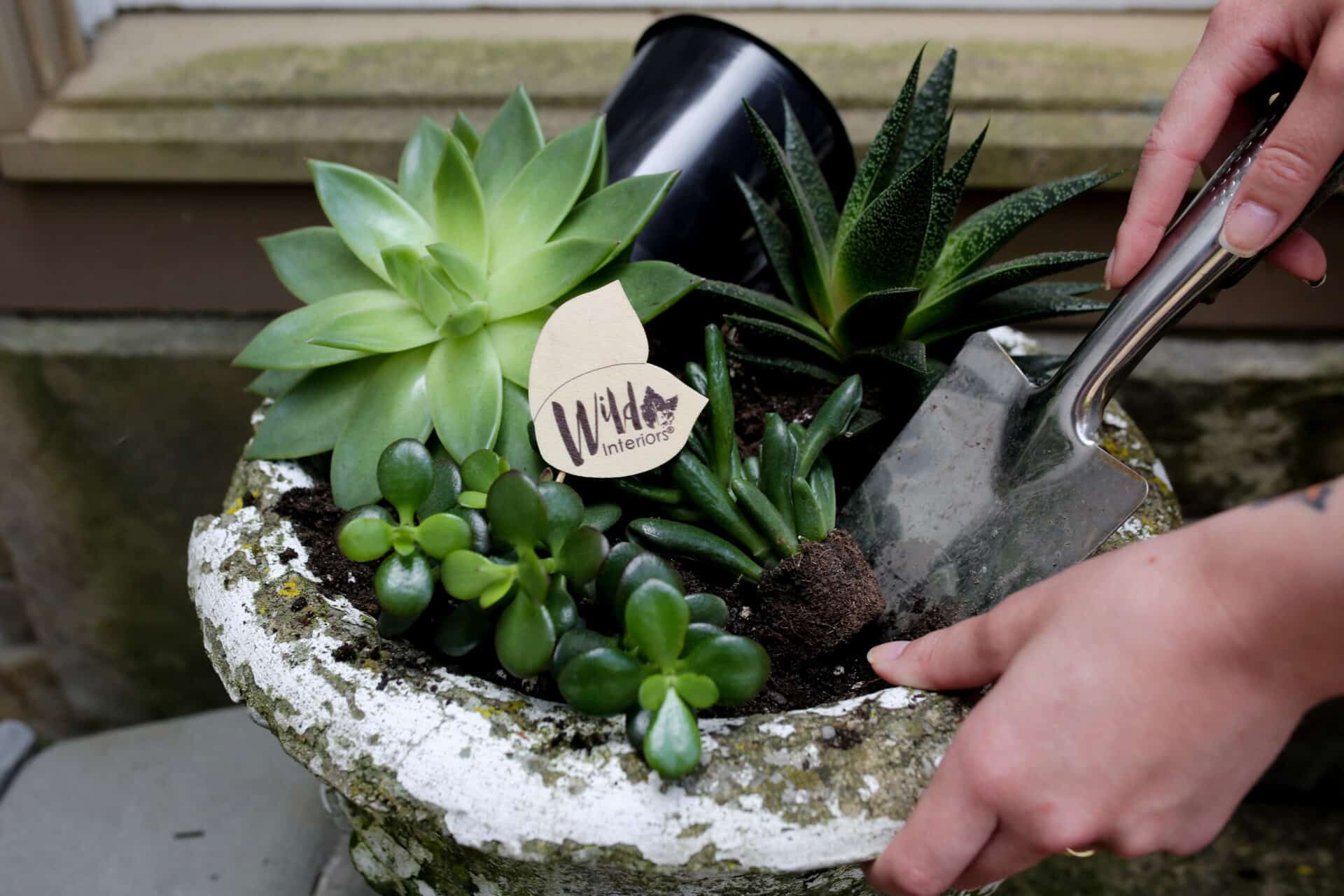House plants that can be potted together include spider plants, pothos, and peace lilies. These plants share similar light and water requirements.
Pairing house plants in a single pot can create a lush, attractive display. It is essential to choose plants with similar care needs to ensure they thrive together. Spider plants, pothos, and peace lilies are excellent choices due to their compatible light and water preferences.
This combination not only enhances the aesthetic appeal but also simplifies maintenance. Ensure the pot has proper drainage to prevent root rot. Regularly monitor the plants for signs of stress or overcrowding. With the right combination and care, mixed plant pots can become a vibrant focal point in any indoor space.

Credit: myplantin.com
Benefits Of Pairing House Plants
Pairing house plants offers many benefits. It creates a harmonious living space. Combining plants can lead to healthier growth. It also enhances the overall aesthetics of your home.
Enhanced Aesthetics
Pairing house plants can transform a room. A mix of plants adds visual interest. Imagine a tall fern beside a trailing pothos. Their contrasting shapes and colors create beauty. You can also group plants with similar colors. This provides a cohesive look. Use a variety of pots to add even more charm. Experiment with different textures and sizes. Your home will feel more vibrant and inviting.
Healthier Growth
Some plants can support each other’s growth. For example, ferns and bromeliads thrive in similar conditions. They both need high humidity and indirect light. Placing them together can improve their health. Plants can also share nutrients when potted together. This leads to stronger, more resilient plants. Be sure to pair plants with similar needs. This ensures they both thrive.
Factors To Consider
When potting house plants together, several factors ensure they thrive. These factors include light requirements, watering needs, and growth patterns. Understanding these aspects helps in creating a harmonious plant environment.
Light Requirements
Plants have different light needs. Some prefer bright light, others need low light. Grouping plants with similar light requirements helps them grow well.
- Bright Light: Aloe Vera, Jade Plant, Snake Plant
- Low Light: Pothos, ZZ Plant, Peace Lily
Ensure the light exposure is consistent for all plants in one pot.
Watering Needs
Watering needs vary among plants. Some need frequent watering, while others prefer dry soil. Matching plants with similar watering needs prevents overwatering or underwatering issues.
| Frequent Watering | Infrequent Watering |
|---|---|
| Ferns, Peace Lily | Cactus, Snake Plant |
Water the plants only when the top inch of soil is dry.
Growth Patterns
Plants grow differently. Some spread, while others grow tall. Combine plants with compatible growth patterns for a balanced look.
- Spreading Plants: Spider Plant, English Ivy
- Tall Plants: Fiddle Leaf Fig, Rubber Plant
Choose plants that complement each other in size and shape.
Popular Plant Pairings
Potting multiple plants together can enhance your indoor garden. The right plant pairings ensure a harmonious and thriving environment. Let’s explore some popular combinations that are easy to care for and visually appealing.
Succulents And Cacti
Succulents and cacti are perfect partners. Both types thrive in similar conditions. They need bright light and minimal water. Popular pairings include:
- Aloe Vera and Echeveria
- Jade Plant and Haworthia
- Barrel Cactus and Sedum
Use a shallow, wide pot with well-draining soil. This setup prevents root rot and ensures the health of both plants.
Ferns And Ivy
Ferns and ivy create a lush, green environment. They both enjoy indirect light and high humidity. Some great pairings are:
- Boston Fern and English Ivy
- Maidenhair Fern and Algerian Ivy
- Staghorn Fern and Grape Ivy
Choose a pot with good drainage and use a rich, organic soil mix. Regular misting helps maintain the humidity these plants love.
Herbs And Flowers
Combining herbs and flowers can brighten your kitchen or windowsill. They often have complementary needs. Ideal pairings include:
| Herb | Flower |
|---|---|
| Basil | Marigold |
| Mint | Nasturtium |
| Thyme | Petunia |
A sunny spot and well-draining soil are essential. Water regularly but avoid overwatering. This ensures both herbs and flowers flourish.
Creating A Balanced Arrangement
Creating a balanced arrangement of house plants can transform your home. Placing different plants together can enhance their beauty. A well-thought mix adds visual interest and harmony. Here’s how you can achieve a balanced plant arrangement.
Height Variation
Mixing plants of different heights is crucial for a balanced look. Tall plants can act as focal points. Place them at the back or center. Shorter plants fill in gaps and add depth.
- Tall Plants: Snake Plant, Fiddle Leaf Fig
- Medium Plants: Peace Lily, Spider Plant
- Short Plants: Succulents, Pothos
Ensure each plant gets enough light. Arrange them to avoid blocking sunlight.
Color Coordination
Colors play a vital role in plant arrangements. Combining plants with complementary colors creates a cohesive look. Use a mix of green shades and colorful foliage.
| Plant | Color |
|---|---|
| Croton | Red, Yellow, Green |
| Calathea | Green, Purple |
| Golden Pothos | Green, Yellow |
Match pots with plant colors for added harmony. Use neutral pots for colorful plants. Bright pots can enhance simple green plants.
Common Mistakes To Avoid
Potting house plants together can be a great way to save space. It also creates a beautiful indoor garden. But there are common mistakes people make. These mistakes can harm your plants. Let’s explore these mistakes and how to avoid them.
Overcrowding
Overcrowding is a common mistake. Each plant needs space to grow. When plants are too close, they compete for resources. This can stunt their growth.
It’s important to give each plant enough room. Check the mature size of each plant. Use a pot that can accommodate all plants comfortably.
| Plant Type | Recommended Space (inches) |
|---|---|
| Succulents | 2-3 |
| Ferns | 4-6 |
| Herbs | 6-8 |
Incompatible Species
Another mistake is potting incompatible species together. Some plants need more water. Others need more light. Mixing them can be harmful.
Always check the care needs of each plant. Group plants with similar needs together. This ensures all plants thrive.
- Plants needing high sunlight: Cacti, Aloe Vera
- Plants needing low light: Snake Plant, Pothos
- Plants needing more water: Ferns, Peace Lily
- Plants needing less water: Succulents, ZZ Plant
By avoiding overcrowding and choosing compatible species, your indoor garden will flourish. Happy potting!

Credit: www.braidandwood.com
Maintenance Tips
Maintaining house plants can be rewarding but requires attention. Here are some essential tips to keep your potted plants healthy and thriving.
Regular Pruning
Pruning keeps plants healthy and encourages new growth. Use clean, sharp scissors to trim dead leaves.
- Remove any yellowing or brown leaves.
- Trim back overgrown branches.
- Prune to shape the plant and improve air circulation.
Consistent pruning helps plants grow better and stay vibrant.
Pest Control
Pests can harm your plants. Regular checks can prevent infestations.
| Pest | Signs | Control |
|---|---|---|
| Spider Mites | Webbing on leaves | Spray with water or insecticidal soap. |
| Aphids | Sticky residue on leaves | Use neem oil or a mild soapy water spray. |
| Mealybugs | Cotton-like masses on plants | Wipe with alcohol-soaked cotton swabs. |
Check plants weekly for pests. Early detection makes control easier.
Seasonal Considerations
Understanding seasonal considerations is crucial for successfully potting house plants together. Each season has unique requirements. This impacts the care and compatibility of plants. Proper knowledge ensures healthy growth and harmony among your potted companions.
Winter Care
Winter brings cooler temperatures and shorter days. This affects house plants significantly. To keep your plants healthy, follow these tips:
- Light: Place plants near windows for maximum sunlight. Consider using grow lights.
- Watering: Reduce watering frequency. Ensure the soil is dry before watering again.
- Humidity: Use a humidifier or place water trays near plants. This helps maintain humidity levels.
- Temperature: Keep plants away from drafts and cold windows. Maintain a stable room temperature.
Some plants thrive together during winter. Consider pairing:
| Plant | Companion |
|---|---|
| Aloe Vera | Jade Plant |
| Snake Plant | ZZ Plant |
Summer Care
Summer offers longer days and higher temperatures. This can stress house plants if not managed properly. Follow these summer care tips:
- Light: Avoid direct sunlight. It can scorch leaves. Filtered light is best.
- Watering: Increase watering frequency. Soil dries faster in summer.
- Humidity: Misting plants can help keep humidity levels up.
- Temperature: Keep plants cool. Use fans or air conditioning if necessary.
Certain plants do well together in summer. Consider these pairings:
| Plant | Companion |
|---|---|
| Spider Plant | Pothos |
| Boston Fern | Peace Lily |
Diy Pairing Projects
Are you eager to create stunning and healthy house plant arrangements? DIY Pairing Projects can transform your space with minimal effort. Pairing house plants together can elevate your home’s aesthetic and boost plant health. Read on to discover beginner-friendly and advanced pairing ideas.
Beginner-friendly Combinations
Starting with easy combinations is a great way to build confidence.
- Spider Plant and Pothos
- Aloe Vera and Jade Plant
- Snake Plant and ZZ Plant
Both plants thrive in similar light and watering conditions. They are low-maintenance and grow quickly.
These succulents require minimal watering. They also prefer bright, indirect light.
Both plants are virtually indestructible. They tolerate low light and infrequent watering.
Advanced Pairing Ideas
Once you master beginner combinations, try these advanced ideas.
- Fiddle Leaf Fig and Boston Fern
- Peace Lily and Calathea
- Monstera and Philodendron
These plants need high humidity and bright, indirect light. They make a lush, tropical display.
Both plants prefer high humidity and consistent moisture. They offer striking foliage contrasts.
These climbing plants need support. They thrive in bright, indirect light and high humidity.
| Combination | Light Requirements | Watering Needs |
|---|---|---|
| Spider Plant and Pothos | Low to Bright Indirect | Moderate |
| Aloe Vera and Jade Plant | Bright Indirect | Low |
| Snake Plant and ZZ Plant | Low to Bright Indirect | Low |
| Fiddle Leaf Fig and Boston Fern | Bright Indirect | High |
| Peace Lily and Calathea | Low to Bright Indirect | High |
| Monstera and Philodendron | Bright Indirect | High |

Credit: www.finegardening.com
Frequently Asked Questions
How Do You Combine Houseplants?
To combine houseplants, choose plants with similar light and water needs. Arrange varying heights for visual interest. Use attractive pots. Group plants closely to create a lush look. Ensure proper drainage for each plant.
Do Houseplants Like To Be Grouped Together?
Yes, houseplants enjoy being grouped together. Grouping helps maintain humidity, improves air quality, and creates a microenvironment.
Can You Companion Plant In Containers?
Yes, you can companion plant in containers. Choose compatible plants that share similar needs. This method saves space and boosts growth.
What Is The Best Houseplant Repotting Mix?
The best houseplant repotting mix includes equal parts peat moss, perlite, and pine bark. This blend ensures proper drainage and aeration.
Conclusion
Pairing house plants can enhance your indoor garden’s beauty. Choose plants with similar care needs for best results. Experimenting with different combinations can add variety. Happy planting and enjoy your lush, green space!

My mission is to help you bring the beauty of nature indoors with expert advice, detailed plant care guides, and creative design ideas.





Leave a Reply